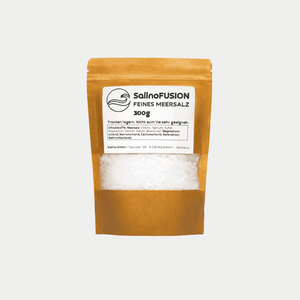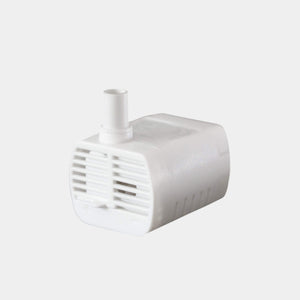When the apartment takes your breath away – or gives
Do you know the feeling when you enter a room and immediately take a deep breath? As if someone has opened an invisible door to calm. And do you know the opposite – when you suddenly feel the urge to leave the room immediately? The air seems heavy, the mood depressed, your breathing shallow. We move between these two extremes every day – often without realizing it.
Our spaces influence us more than we realize. Feng Shui – the ancient Chinese art of interior design – assumes that our visible surroundings reflect and influence our inner selves. And more and more people are discovering that Feng Shui affects not only the eyes, but also the lungs. After all, air is more than oxygen. It is the medium that connects body and soul. And how we breathe says a lot about how we live.
In this article, we explore how feng shui and conscious breathing techniques interact—and how your home can become a resource. We talk about salty air, quiet spaces, and the amazing impact of small changes. Finally, we take a look at an unobtrusive tool that brings ocean air into the bedroom —without incense sticks or singing bowls.
Ready for a different kind of living? Then take a deep breath.
The invisible order of the air
 Qi and Oxygen: When Energy Really Becomes Tangible
Qi and Oxygen: When Energy Really Becomes Tangible
In Feng Shui, Qi is the central force – an invisible life energy that flows through everything. In the West, we tend to speak of "atmosphere" or "energy in a room." But what's behind this? When we talk about poor indoor air, we often mean not just CO₂ or pollutants, but also a noticeable density, a tiredness that hangs over us like a veil. And indeed: Air quality has been proven to impact concentration, sleep, and mood. The WHO classifies poor indoor air as a health risk – comparable to noise or lack of exercise.
Those who practice Feng Shui think about the space from the perspective of air. Window positions, furniture arrangement, lighting conditions – all of these influence how air circulates. A room with dead corners, blocked doorways, or artificially scented air fresheners not only blocks the Qi but also our natural breathing.
Breathing as a mirror of the environment
Observe yourself: How do you breathe in your living room? How do you breathe in your kitchen? And how do you breathe when you're taking a walk in the woods? Our breathing adapts – sometimes narrow and shallow, sometimes free and deep. Our environment acts like a second breathing muscle.
Especially in urban apartments with poor ventilation and lots of technology—printers, routers, radiators—not only the indoor climate often suffers, but also our autonomic nervous system. Stress leads to shallow breathing, and shallow breathing leads to more stress—a vicious cycle that can be spatially resolved. Not by remodeling, but by consciously observing.
The five elements – and how salt air complements them
Feng Shui works with the five elements: wood, fire, earth, metal, and water. Each represents specific qualities—growth, clarity, stability, intuition. And each influences the colors, shapes, and materials in a space.
But how does salt fit into this? As a natural crystal of water and minerals, salt acts like a silent link. When applied to the air—for example, via a graduation tower or modern mini-saltworks—it not only brings the element of water back into the room in a subtle way, but can also significantly improve the breathing environment. Studies show that salty air can loosen mucus, support nasal breathing, and promote regeneration.
Space to breathe – and to be
 When the bedroom doesn’t calm down
When the bedroom doesn’t calm down
People spend about a third of their lives sleeping. But how many bedrooms are truly quiet? This doesn't just mean acoustic silence—it means a silence that goes deep. One that softens the breath. One in which one feels safe.
In many homes, the bedroom is the least considered room. Too small, too functional, too cluttered. Yet, from a feng shui perspective, it is the heart of regeneration. And this heart beats in time with breathing. People who sleep poorly often wake up with a dry throat, a stiff neck, or a headache. All of these are signs that the air isn't right—not in the technical sense, but in the tangible sense.
Feng Shui advises ridding the bedroom of unnecessary technology, reflective surfaces, and open shelves. The room should feel "closed," not in the sense of being cramped, but rather like a protective cave. Above all, however, the air should be able to circulate freely—with windows that are opened regularly, but also with targeted humidification or ionization where necessary.
The science of sleep environment
Sleep medicine specialists confirm: Indoor air quality is crucial for nighttime rest. Dry, heated air, for example, irritates mucous membranes, promotes nighttime coughing, and can even worsen snoring. Excessive humidity, in turn, promotes mold and mites.
But it's not just about measurements. Studies by the Lung Information Service show that salty air can improve mucus transport in the bronchi in people with respiratory diseases and alleviate nighttime breathing pauses. Even in healthy people, many report subjectively better rest and a deeper sense of sleep.
Not everyone can move to the seaside or a salt mine. But there are ways to bring a small dose of the ocean climate into your home. This makes the air not only measurably but also noticeably better.
From Air to Soul: The Invisible Connection
It's astonishing how much air quality influences our emotional well-being—and how quickly we forget it. A stuffy room makes us irritable. Fresh air clears our minds. Breathing is the only autonomous bodily function we can consciously influence—and it's directly connected to our autonomic nervous system. Learning to breathe more deeply not only changes our body but also our inner state.
Feng Shui calls this transition between matter and spirit "between heaven and earth." It's the space where decisions are made, inner tensions are released, and a sense of harmony emerges. And sometimes that begins exactly where you wouldn't expect it: at an open window. Or with a quietly operating mini-saltworks that releases fine salt particles into the air overnight.
The art of breathing consciously – and living consciously
Breathing is the new thinking
In the Western world, breathing has long been considered a secondary concern. As long as it functions, little attention is paid to it. Only when it falters—in the case of asthma, stress, or panic attacks—does it come into focus. But what if conscious breathing not only helps in times of need, but also becomes the key to a better quality of life in everyday life?
This has long been known in Far Eastern teachings. Yoga, Qi Gong, Zen – breathing plays a central role everywhere. It's not just a technique, but a posture. It shapes presence. Those who learn to connect with their breath soon realize: The quality of their breath influences the quality of their thoughts. And of their feelings. And vice versa.
What does this have to do with your home? More than you think. Because spaces remind us – or they distract us. A living room with clean lines, natural materials, and harmonious lighting can promote a moment of respite. A room full of stimuli, cables, scents, and clutter, on the other hand, robs us of it.
Indoor climate is relationship climate
 In many homes, the air is not only dry but also full of irritants: detergent perfume, printer emissions, plasticizers. Our bodies absorb these long before we consciously realize it. The lungs are a very sensitive organ – they react not only to pollen and pollutants, but also to emotional states. Shortness of breath is often a spiritual cry for help.
In many homes, the air is not only dry but also full of irritants: detergent perfume, printer emissions, plasticizers. Our bodies absorb these long before we consciously realize it. The lungs are a very sensitive organ – they react not only to pollen and pollutants, but also to emotional states. Shortness of breath is often a spiritual cry for help.
That's why healthy home decor begins with perception. Take a few minutes every day to simply be still in a room. How does it feel? Is it warm or cool? Open or narrow? Can you breathe here—in both senses of the word?
Conscious home decor doesn't mean perfection, but dedication. Plants that purify the air. Colors that ground. Materials that are allowed to breathe. And perhaps salt too—as a reminder of the sea, a stimulus for the bronchi, a silent ally of the breath.
Small steps – big impact
Sometimes it's the smallest changes that have the deepest impact. Here are three easy-to-implement suggestions:
- Ventilate rooms consciously: 5–10 minutes of quick ventilation in the morning and evening is more effective than leaving windows ajar for hours. Bedrooms especially benefit from this.
- Prefer natural materials: wood, linen, clay, and stone have a calming effect on the nervous system—noticeable if you allow yourself to do so.
- Create breathing islands: a chair by the window, a cushion on the floor, a diffused point of light – places where you can relax, without any function.
And if you feel that your lungs need more than just fresh air—for example, in the case of allergic symptoms or low-humidity winter air—support from salty air can also be beneficial. Not as a substitute for medical treatment, but as a daily routine. Some use graduation towers, others inhalation. And some rely on compact devices that quietly and continuously produce salt air—in the middle of everyday life.
Conclusion: Where breath flows, life flows
Feng Shui doesn't begin with moving furniture. It begins with awareness. With the silent recognition that spaces shape us—and that we can shape them. And that our breath is perhaps the most subtle measuring instrument. It shows us whether something is right. Whether we are welcome. Whether we feel ourselves again.
The art of combining breathing and interior design is not an esoteric game. It is deeply human. And deeply practical. For each of us has a home – and each of us has breath. Both can heal. Both can make us ill. The question is: How consciously do we live within it?
Those who begin to see their surroundings as participants—not as mere backdrops—will find new paths to regeneration. To better sleep. To greater clarity. And perhaps even to an inner peace that no expensive piece of furniture can replace.
One aspect that is often overlooked is air quality. It's there, constantly, yet rarely the focus. Especially in urban homes, where the air is dry from heating, or where respiratory sensitivity is present, it can be beneficial to specifically support natural air quality.
An optional companion: salty air in everyday life
Those who can't travel to the sea regularly but still want to benefit from salty air can now find compact solutions for everyday use. One option is the Mini-Saline from SalinoVatis – a silent device that uses 3D printing technology to release a high concentration of salt into the room air. It operates quietly, requires no filter changes, and is particularly suitable for bedrooms or quiet retreats. About us: Our product and its...
For many, it's not a substitute, but rather a small reminder of what's important: to breathe deeply. In the best sense of the word.



